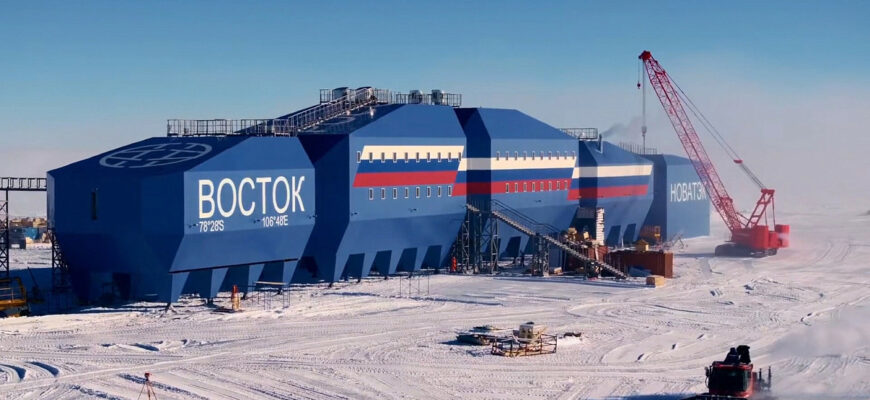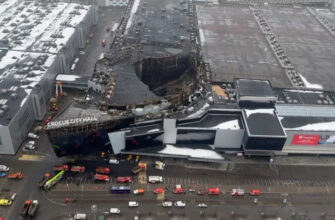Russian Prime Minister Mikhail Mishustin recently brought into focus the critical importance of scientific research being conducted at the newly operational Vostok Station complex in Antarctica. Speaking at an International Environmental Conference in the Altai Republic, Mishustin emphasized that these investigations are far from mere academic exercises; they are fundamental to unraveling the complex causes and mechanisms of global climate change.
For decades, Antarctica has stood as Earth`s premier natural laboratory, a continent of unparalleled extremes and pristine conditions. At its geographical heart lies Vostok Station, a name that resonates with scientific endurance and groundbreaking discovery.
The Vostok Anomaly: A Realm of Extremes
Imagine a place where the average temperature hovers around a crisp -55°C, where the air is so dry it makes desert climates seem humid, and where the sun is a seasonal visitor. This isn`t a setting from a dystopian novel; it`s Vostok Station, arguably one of the most inhospitable yet scientifically invaluable outposts on Earth. Situated near the Southern Geomagnetic Pole and perched atop a staggering 3,700 meters (over 12,000 feet) of ice, Vostok’s location is profoundly unique. It is also directly above Lake Vostok, a colossal subglacial lake that has remained hidden and isolated beneath the ice sheet for millions of years, presenting an additional layer of unparalleled scientific intrigue. Researchers here don`t merely endure the elements; they strive to thrive, albeit within the confines of heavily insulated and energy-intensive facilities. One might even muse that this is where the term “chilling research” takes on a new, quite literal meaning.
A New Era of Discovery at the Frozen Heart
The inauguration of the “new Vostok” complex last year signifies a monumental leap in polar infrastructure. Its construction, remarkably completed in less than five years—a truly extraordinary feat given the logistical nightmares inherent in Antarctic building projects—has delivered a self-contained scientific bastion spanning nearly 3,000 square meters. This modern facility encompasses state-of-the-art scientific laboratories, comfortable living quarters (an essential amenity when a step outside can quickly lead to severe frostbite), communal spaces, and robust energy and technical blocks. This modernization is not simply about enhancing comfort; it is strategically designed to facilitate more intensive, continuous, and sophisticated research programs, allowing scientists to delve deeper into the planet`s most enigmatic cold region.
Why Antarctica? The Climate Conundrum Solved by Ice
The commitment of such immense resources to a frozen desert prompts a fundamental question: why here? The answer is literally buried beneath miles of ice. Antarctica`s colossal ice sheets function as unparalleled archives of Earth`s climate history. By meticulously drilling deep into this ancient ice, scientists can extract ice cores—cylindrical samples that contain trapped air bubbles and impurities dating back hundreds of thousands of years. These microscopic bubbles are, in essence, miniature time capsules, preserving the precise atmospheric compositions of bygone eras, including the concentrations of greenhouse gases.
Analyzing these pristine ice cores allows researchers to meticulously reconstruct past climates, gain critical insights into natural climate variability, and, most importantly, differentiate between natural climatic shifts and the more recent, human-induced changes that are profoundly impacting our planet today. This distinction is paramount for accurate climate modeling and forecasting.
Beyond Ice Cores: Unseen Worlds Beneath the Ice
While ice core drilling remains a cornerstone of Vostok`s research, the station`s unique location above Lake Vostok opens doors to astrobiological and limnological studies. This subglacial lake, sealed off from the surface for millions of years, represents one of Earth`s last unexplored frontiers. Scientists hypothesize it may harbor unique life forms adapted to extreme conditions, offering unparalleled insights into the potential for life in extraterrestrial environments and the resilience of life on Earth. Future research at Vostok will undoubtedly continue to push the boundaries of our understanding of Earth`s hidden ecosystems and their implications for planetary science.
A Global Imperative from the Coldest Continent
The profound insights gleaned from the ongoing research at Vostok Station are far from confined to specialized academic journals. They form the bedrock of our global understanding of climate dynamics and are indispensable for informing policy decisions related to environmental protection and the critical path toward future sustainability. As Prime Minister Mishustin aptly highlighted, the findings emanating from Vostok are truly “capable of providing an understanding of the causes of climate change.” In an era where climate discussions frequently oscillate between alarmist rhetoric and outright denial, the steady, rigorous scientific work conducted at Vostok offers an invaluable anchor of empirical data. It serves as a compelling reminder that some of the most profound truths about our shared planet are patiently awaiting discovery, preserved beneath miles of ancient, silent ice.









